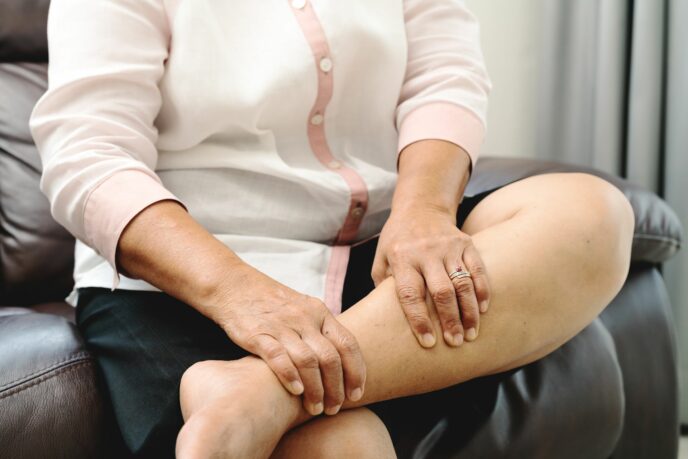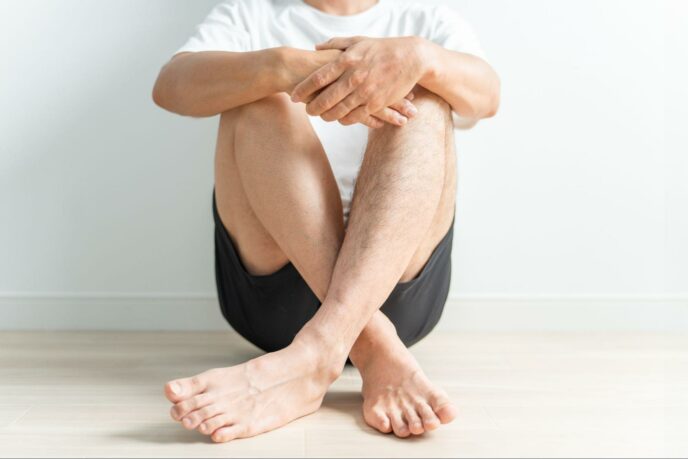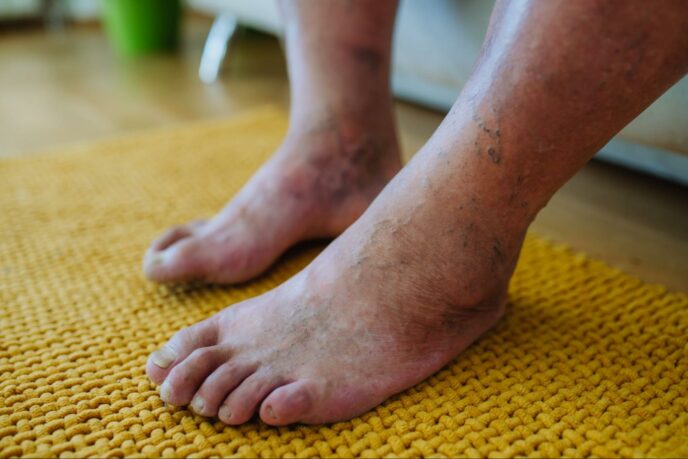
Why Do I Have Leg Pain at Night?
Do you often wake up in the middle of the night due to leg pain? While occasional leg discomfort may not be a cause of concern, persistent leg pain at night could be a sign of an underlying health condition. One condition that may cause leg pain at night is peripheral artery disease (PAD).
PAD occurs when plaque builds up in the arteries, leading to narrowing and reduced blood flow, primarily in the arteries of the legs. It is often a result of atherosclerosis, where fatty deposits accumulate in the arteries, restricting blood flow to the lower extremities. In this blog, we’ll discuss the connection between leg pain at night and PAD, exploring its causes and symptoms.
Leg Pain at Night: A Symptom of PAD
One of the main symptoms of PAD is intermittent claudication, which is characterized by pain, cramping, or discomfort in the legs, typically during physical activity. However, in some cases, people with PAD may also experience leg pain at rest. Leg pain at night, known as nocturnal leg pain, is a common symptom of PAD and is typically caused by reduced blood flow to the muscles of the legs during periods of inactivity, such as when lying down in bed.
Why Does PAD Cause Leg Pain at Night?
There are several reasons why PAD can cause leg pain at night.
Severe Arterial Blockages
In the advanced stages of PAD, the arteries that supply blood to the legs become significantly narrowed or completely blocked. When you’re active, the muscles require more oxygen, but the narrowed arteries can’t deliver sufficient blood flow to meet this demand, causing pain (claudication). However, even when the muscles are at rest, they still require oxygen. When blood flow is severely compromised, as in advanced PAD, the muscles don’t receive enough oxygen even during rest, leading to leg pain at night.
Decreased Blood Flow at Night
During the night, the metabolic rate of the body slows down and blood pressure tends to drop. If you suffer from PAD, this decrease in blood pressure can worsen the already insufficient blood flow, leading to a lack of oxygen in the muscles. As a result, leg pain often becomes worse during the night, disrupting sleep and causing significant pain and discomfort.
Muscle Cramping
When you’re asleep, your muscles may experience cramping due to decreased blood flow. If your muscles do not receive an adequate oxygen supply, they are more susceptible to cramping and spasms. If you have PAD, this can cause severe leg pain at night and difficulty sleeping.
Peripheral Neuropathy
PAD can also lead to peripheral neuropathy, a condition characterized by damage to the nerves in the extremities. Neuropathy can cause sensations of tingling, numbness, or burning pain in the legs, which may worsen at night due to changes in blood flow and nerve activity during sleep. The combination of reduced blood flow and nerve damage contributes to the development of rest pain in PAD patients.
How Do I Stop My Legs from Hurting at Night?
If you experience leg pain at night or any other symptoms of PAD, it’s important to talk to your doctor for a proper diagnosis and treatment plan. Your doctor may recommend the following to help alleviate discomfort and improve sleep.
Elevate Your Legs
Prop pillows under your legs to elevate them slightly while sleeping. This position can promote better blood flow and reduce pressure on the affected arteries, potentially easing leg pain.
Warm Compress
Apply a warm compress or heating pad to your legs before bedtime. Heat can help relax muscles, alleviate cramping, and improve circulation, offering relief from nocturnal leg pain.
Regular Exercise
Engage in regular physical activity, such as walking or cycling, to improve circulation and overall vascular health. Exercise can also help reduce symptoms of PAD, including leg pain at night.
Healthy Lifestyle
Adopting a healthy lifestyle, including maintaining a balanced diet, quitting smoking, and managing other underlying health conditions such as diabetes and high cholesterol, can help improve PAD symptoms and reduce nocturnal leg pain.
Medication Management
Work closely with your healthcare provider to manage medications for PAD. This may include blood thinners, cholesterol-lowering medications, or medications to improve blood flow and alleviate leg pain.
Minimally Invasive Treatments
In severe cases, minimally invasive treatments such as angioplasty, atherectomy, or stent placement may be recommended to restore blood flow to the legs. Your doctor can evaluate your symptoms, perform diagnostic tests if necessary, and tailor a treatment plan to address your specific needs to improve blood flow and alleviate leg pain at night associated with PAD.
Relieve Leg Pain at Night with American Endovascular
Leg pain at night can significantly impact your sleep quality and overall quality of life, especially when associated with conditions like peripheral artery disease. By implementing lifestyle modifications and talking with one of our vascular specialists, you can effectively manage PAD symptoms and improve your well-being. Don’t let leg pain at night go untreated; take proactive steps to address it and reclaim restful, rejuvenating sleep. Contact us today to request an appointment at one of our vascular centers in New Jersey and New York.
Related Blogs & Videos
Learn more about vascular health, prevention, and care for Peripheral Artery Disease.




